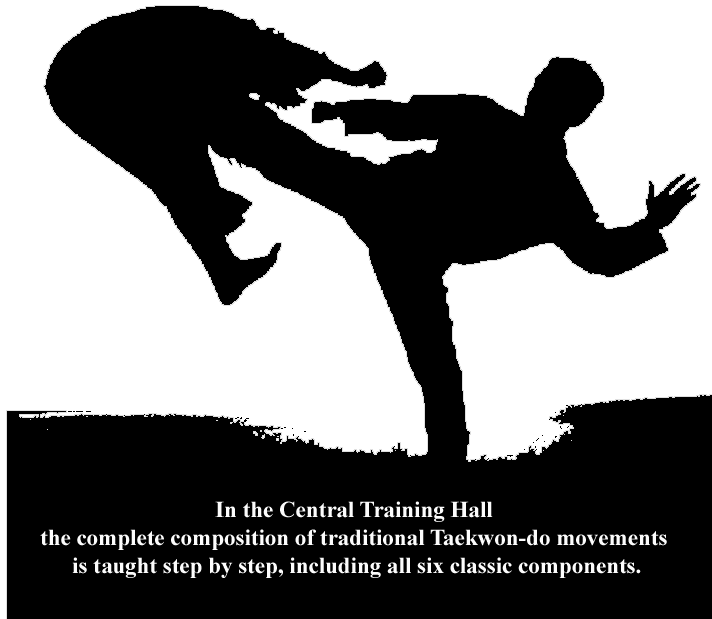
 |
1.
Fundamental movements.
The Alpha and the Omega of traditional martial arts – so
the basics of Taekwon-do, never to be forgotten! Everyone has to
exercise the fundamental movements, the hand and foot techniques
again from time to time independently from the level of knowledge.
The single performed practice of basics takes place on training
sessions either in standing position or in movements, but without
the help of any partner. Intensive training and countless repetition
helps to develop the ability to focus strength and coordination.
Balance and stability improves, as well as motional beauty. Attacking
and defending techniques of more and more increased levels become
faster, more accurate and efficient.
|
 |
2. Patterns.
(Competition event)
Practices of patterns (forms) completed alone, in
a highly dynamic way symbolize the overcome against imaginary opponents
attacking from different directions, using techniques determined
in advance. In these series of movements - usually based on two
or four direction symmetry - the combination of punches, blocks,
kicks or jumping techniques follow one another in an accurately
planned order. There are 24 obligatory form practices in Taekwon-do,
that symbolize the 24 hours of the day, or - in a broader sense
– the eternal cycle of life.
|
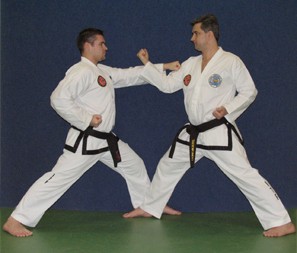 |
3.
Step sparring.
(Basics in pairs or fighting situation practice)
Now the partner takes part in the practice of an imagined attacking
and defending situation, choosing movements from the fundamentals
and patterns. Formal step sparrings take place while moving back
and forth in a strictly planned pattern. The imitation of imaginary
and idealized sparrings in more and more difficult situations, their
combinations have to be exercised in one-two-three or more steps.
Expertise in formal step sparring is virtually the last stage that
can be followed by real free sparring.
|
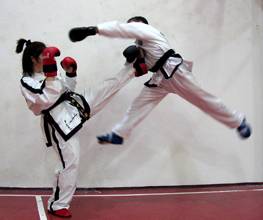 |
4. Free sparring.
(Competition event)
This is the final goal of Taekwon-do. It shows one’s behavior in
a realistic fighting situation. Practitioners of Taekwon-do try
to overcome their unexpectedly attacking opponent, using their knowledge
acquired at fundamentals, patterns and formal step sparrings. Success
or failure usually highly depends on the fighters’ own psychological
components and personal stamina as well. The learning of techniques
is only one step on the road to win. However there is not, and there
cannot be real victory without the so called “Indomitable fighting
spirit” also mentioned in the 5th point of the Tenets of Taekwon-do.
|
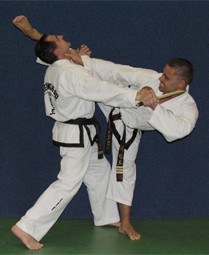 |
5.
Self defense.
Suggested to be used mostly by advanced students and black
belts, because proper technical overview and preliminary close-combat
training is needed for disarming any attacker, that beginners do
not possess yet. It’s purpose is to acquire effective close range
combat fighting and surviving techniques, that can help to avert
real situations of emergency. See for example: release from grab
or throttling, self defense at a tight space, using only foot technique
while the arms tied back, fighting effectively against more opponents
or an attacker with weapon.
|
|
6.
Breaking technique. (Competition event)
A very important, spectacular
part of Taekwon-do that represents a big challenge. This is a tool
that reflects physical stamina, mental strength, braveness, skill
and technical ability. In our days sparrings are performed in protective
equipment, under strict rules. Taekwon-do practitioners can still
measure the devastating strength of their techniques by destroying
objects of different solidity. The hard training of hand and foot
parts used for breakings has to be started at the very beginning
already from white belt and can never be finished. Highly trained
body parts, combined with the scientific Taekwon-do training methods
and mental strength, help to reach amazing achievements. So our
fist develops to be a “lethal weapon”, which is essential not only
at demonstration circumstances, but also becomes our effective help
even in true combat fight or street-self defense situations.
|
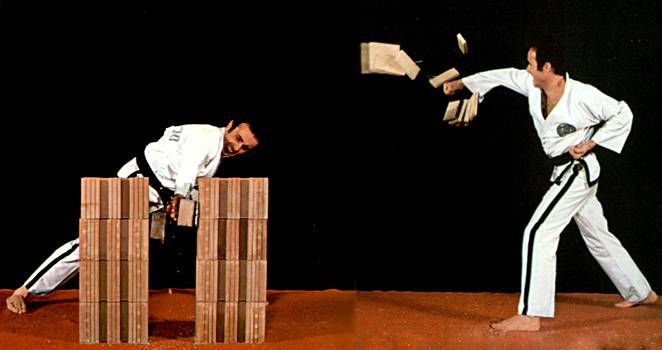
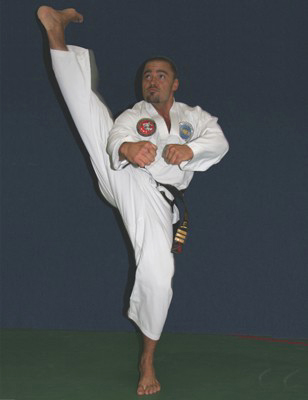 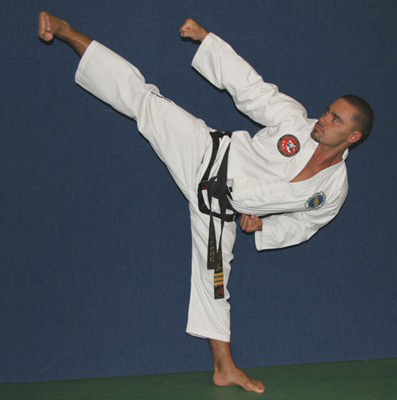 |
|


